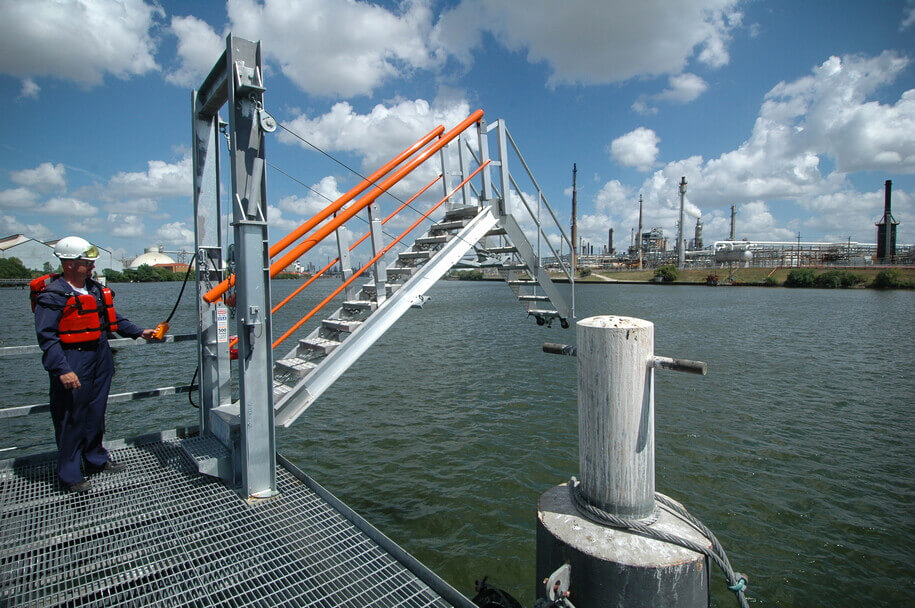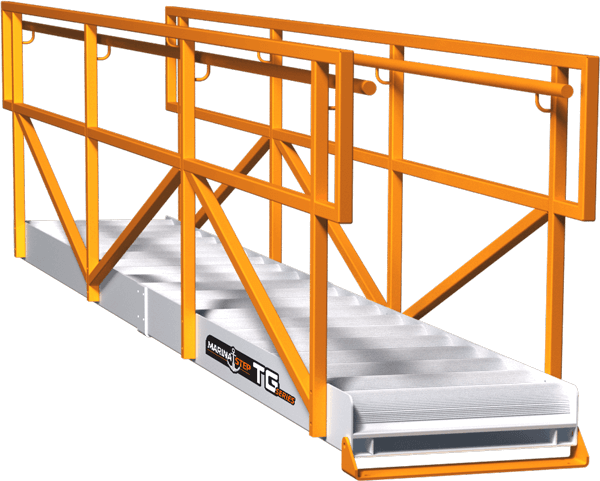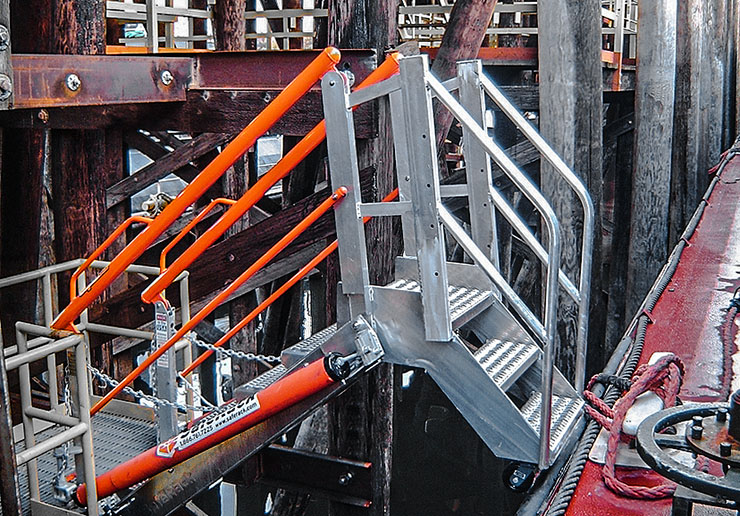Ship and barge access, loading, and unloading can be challenging if you are not aware of the options, and the factors that can affect your options.
When accessing a ship or barge, a proper setup is needed to provide efficiency for marine loading and unloading, and provide a safe environment. Safety needs to include precautions when accessing the vessel and the right equipment if something were to go wrong. Proper precautions help to keep all dock workers, vessel employees, and passengers safe going to and from the vessel. The top considerations to make when setting up your access platforms, gangways, and ladders are:
- Changes in Vessel Height When Based – A few factors can affect the height of the ship or barge vessel while it is docked. Not only can waves change the position, but so can tide and shipload weight. Tide levels vary per location and should be checked daily to know when the tide is coming and when it is going. The amount of load on the ship will also affect the buoyancy. During a full day of loading or unloading the ship can rise a few inches or a few feet throughout the day, which would change the level at which the platform or gangway needs to be. When researching equipment be sure to consider the location and weight of product being loaded and/or unloaded from the vessel.
- Changes in Vessels – Depending on the dock, ships and barges will change daily or throughout one day so the loading equipment needs to accommodate the varying changes in vessel height that arrive and depart from the dock location.
- Environmental Conditions – How will the environment be from season to season at the dock location? This can greatly affect the safety of your workers, as well as, the type of equipment you purchase. The maintenance of the equipment and area should also be considered when picking a loading/unloading solution.
What Equipment to Consider Based on Varying Conditions
A particular piece of equipment, or a combination of various pieces of equipment, may be required to get the best set-up for your situation. Not only are you looking for productivity, but a solution that keeps your employees safe and efficient.
| Sideline Hint: Having all the needed components from one source will not only help speed up the process but also to keep all components compatible. Consider an EPC (Engineering, Procurement, and Construction) provider that can move you from pre-phase 1 to the final phase without switching the main project contact points. |
Equipment to consider for any marine loading project should be:
- Truss Style Gangways
Have a more level access point that spans a small or large distance? Truss-style gangways are perfect for this situation because they are constructed to span a large distance while keeping a stable and safe access point to the vessel. The truss-style gangways can be engineered to adapt to various heights while keeping a stable incline or decline.

- Self-Adjusting and Leveling Stairs
Self-adjusting and leveling stairs (SAS gangways) are perfect for those situations that call for various levels of stairs to access and the ability to fold down, or up, the gangway stairs easily and out of the way.

Using a well-known and trusted provider or consultant, you can get a solution that not only meets your operational needs but also the safety requirements to keep your workers productive and safe. Custom solutions are always an option to meet your exact needs in very specific environments.

SafeRack’s aluminum gangways for barge access and ship access are constructed of durable corrosion-resistant marine-grade aluminum and built to last. Gangways are available in sizes up to 50′ in length and 5′ in width. Our marine gangways are designed for OHSA-compliant worker safety, durability and reliability in marine environments and are built-to-order to your required length and specifications. Learn about all of SafeRack’s marine products and solutions




























